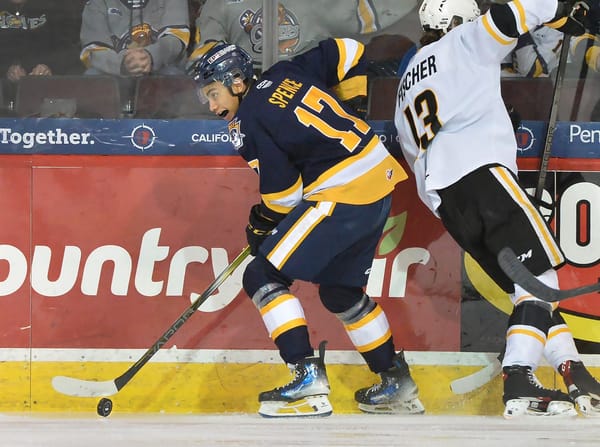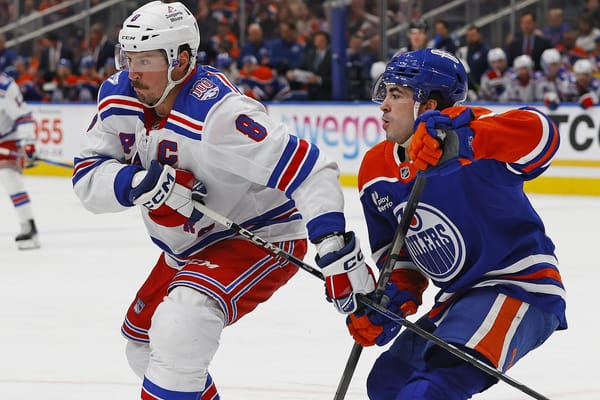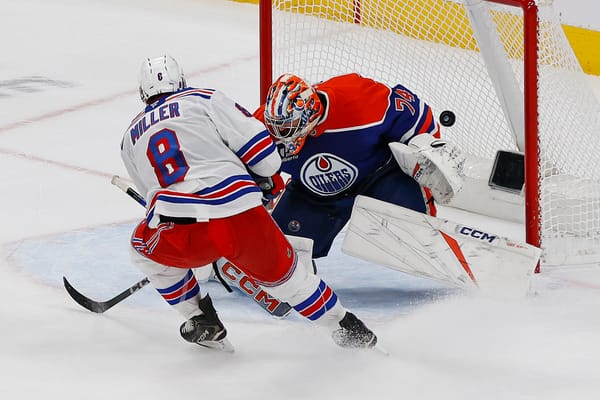2021 Report Card: Mika Zibanejad
The 28 year-old had a season affected by COVID-19.
Expectations For This Year
Mika Zibanejad ended the 2019-20 season with a career-high of 41 goals in just 57 appearances on the ice, making him fifth in the NHL for most goals scored. Of those 41 goals, 15 were power-play goals. Additionally, he had 34 assists, racking up a total of 75 points and placing him in 12th place in the league for most points.
Zibanejad was tops in the NHL with a goals per game average of 0.71. Although he was out for 13 games in November of 2019 due to an undisclosed upper-body injury, he was still able to have a standout season. Zibanejad had arrived as a star.
The Swedish center had an unforgettable 5-goal game against the Washington Capitals where he was the first player in NHL history to score all three types of goals (even strength, power play, and shorthanded), plus a natural hat trick and have 3 or more assists in a game. He tied for the franchise record of most goals in a game, and became only the third player in franchise history to achieve such an accomplishment.
He helped bring to Rangers to the playoffs but fell short once they were there, not recording any points in Game 2 or 3 of the Stanley Cup qualifying round. Fans expected to see Zibanejad donning the “C” on his Broadway blue jersey this season as he had proven himself to be a number one center.
Performance
Unfortunately, Zibanejad had a rough start to the beginning of this season, contracting COVID-19 just before the start of training camp. He only scored three goals in the first 27 games, stating after the fact that he hadn’t been feeling good and having had COVID-19 affected his slow start to the season. Ex-coach David Quinn even benched him in-game during early March. It had taken a toll on his body and conditioning.
Mika Zibanejad opens up about coming back from having COVID at the beginning of the season:
— Rangers Videos (@SNYRangers) May 10, 2021
"I think I tried to tell myself that I was feeling good and I was feeling fine...I didn't really feel up to speed after that...I didn't want to have anything to have an excuse" pic.twitter.com/qM7fOVCQvs
However, the Blueshirt returned to his usual high-scoring self in March and picked it back up in the last 29 games by scoring 21 goals. He was able to finish the season strong with 50 points, 26 of those being assists, and averaged 20:06 TOI/GP.
That surge in the second-half also put him in the lead for most goals on the team for the fourth year in a row. When looking at Zibanejad’s advanced stats, his expected goals for percentage was a 45.86 (-3.85 Rel). His Corsi For percentage dropped from a 49.8 to a 45.8, which is a new career-low, bringing his career CF% to just below 50. Even though his performance on the ice improved, his stats are still affected by his almost non-existence from the opening of the season. But, we also have to keep in mind that the Rangers faced the same six teams for almost four months straight which played a role in his performance.
Final Grade: B+
Banter Consensus: B+
The bar was set high for Zibanejad this season, fans and coaching expected him to continue to excel in the way he had for the previous three seasons. He closed out the season on a higher note, but it is hard to judge him too harshly when COVID-19 takes such a physical and mental toll on the body.
He received a B+ average from the Blueshirt Banter Staff as opposed to his A+ from last year. So although he was not lighting up the sky from the first puck drop of this season, Zibanejad did work hard to get back into the condition he was in and play just as hard as before. In a way, we have to look at his particular numbers in two parts, like a before and after.
Expectations For Next Year
On the flip side of that, Zibanejad is heading into the final year of his contract. He will be due a pay raise following his current AAV of $5.35 million a year. Exceeding expectations will mean he should earn more money. Considering his health played a major part in his gameplay early on this year, I believe we will see Zibanejad reach career highs next season as he makes the last season of his contract really count. If he does not perform to his usual standards and/or improve next season, he could give Chris Drury a reason to not re-sign him next summer and avoid an increased contract.




